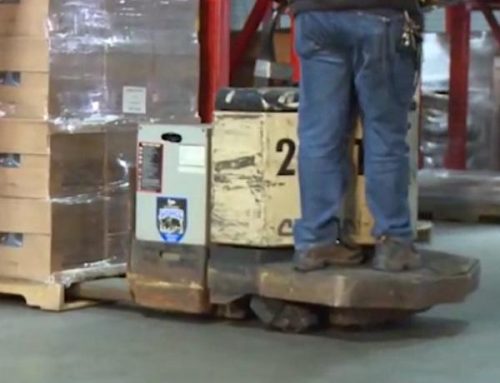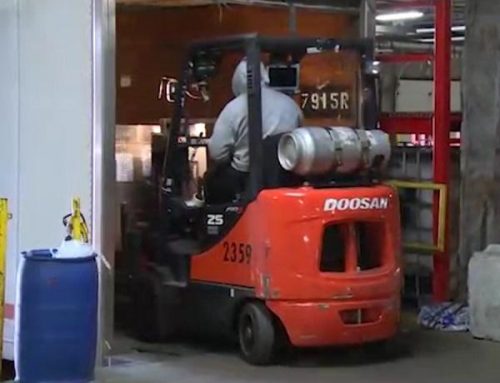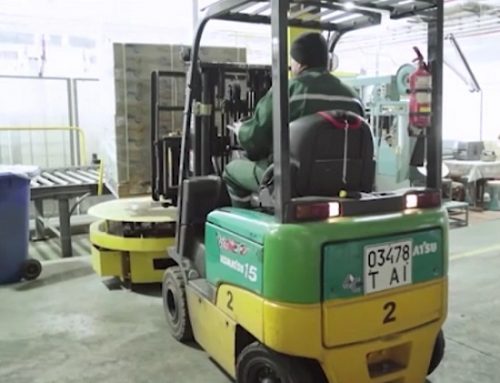Manual pallet jacks are invaluable tools that allow individual workers to efficiently move heavy palletized loads by hand. However, these compact devices can also pose serious dangers if they are misused or mishandled. This in-depth guide covers techniques and best practices for safely operating manual pallet jacks, based on key lessons from an online workplace safety training program. Mastering safe pallet jack procedures is critical for protecting yourself, your coworkers, and your facility from harm.
Understanding Pallet Jack Components
To use a manual pallet jack safely, you first need to understand how it works. These hand-powered units are relatively straightforward in design, but have key components that enable an operator to lift, move and lower heavy loads. The main elements of a manual pallet jack include:
- Forks to hold pallets. The forks slide into a pallet to securely grip and move it.
- A hydraulic lifting system. Pumping a handle activates a hydraulic cylinder that raises and lowers the forks.
- Wheels for floor travel. Wheels mounted under the forks allow an operator to roll the jack and its load.
- A steering system. The jack is steered using a tiller arm that controls the direction of the wheels.
The key control for operating these components is the “actuation lever” located on the tiller’s loop handle. This lever has three positions: down, neutral and up. Moving the lever down and pumping the tiller handle raises the forks by powering the hydraulic lift. The neutral position disengages the hydraulics so the tiller can steer freely. Pushing the lever up releases hydraulic pressure and lowers the forks.
Hazards of Improper Use
While manual pallet jacks are not overly complex, their improper use can result in severe injuries and property damage. Pallet jacks weigh several hundred pounds and carry thousands more in payload. Uncontrolled, they can crush feet, slam into facility infrastructure and even knock operators off docks.
Common hazards include:
- Unexpected pallet jack movement hitting pedestrians.
- Unsecured and shifting loads falling from the forks.
- Operators losing control on inclines and corners.
- Tipping over on uneven surfaces or ramps.
- Jacks rolling uncontrolled into walls, racks and machinery.
- Fork tripping hazards left unattended.
Staying Safe Through Proper Techniques
Thankfully, following proper operating procedures can greatly reduce pallet jack mishaps. Key safe techniques include:
- Donning steel-toed boots and slip-resistant gloves to protect feet and maintain grip.
- Thoroughly inspecting the jack before use. Look for problems like stuck forks, loose wheels and cracked hydraulics.
- Assessing that the load weight is within the jack’s rated capacity.
- Centering loads on the forks and securing unstable cargo.
- Raising loads no more than 1 inch off the floor to maximize stability.
- Pulling loads when traveling distances for optimal control.
- Pushing loads when precision positioning for final placement.
- Maintaining reasonable walking pace without sudden speed changes.
- Continually scanning for pedestrians, intersections and tripping hazards.
- Keeping hands and feet clear when lowering forks and loads.
- Lowering forks fully when stopping and parking.
Safe Techniques for Special Situations
Certain workplace environments also require additional precautions, including:
Loading Docks:
- Staying away from dock edges where pallet jacks can fall.
- Crossing dock plates and levelers in their centers at right angles.
- Ensuring dock components are rated for pallet jack weight.
Inclined Surfaces:
- Pulling loads up ramps and grades by walking backwards uphill.
- Traveling straight up/down slopes without turning.
- Braking while traveling down slopes by walking behind.
Lift Gates:
- Pushing jack onto platform versus pulling.
- Locking jack’s steering wheels before lifting.
- Loading within lift gate weight ratings.
- Keeping feet safely on platform.
By putting safe pallet jack practices into action, operators can help create an incident-free workplace. Carefully follow your employer’s hands-on training and always think “safety first” when moving materials. The few minutes spent operating pallet jacks with caution can prevent injuries, damage and lost productivity.










